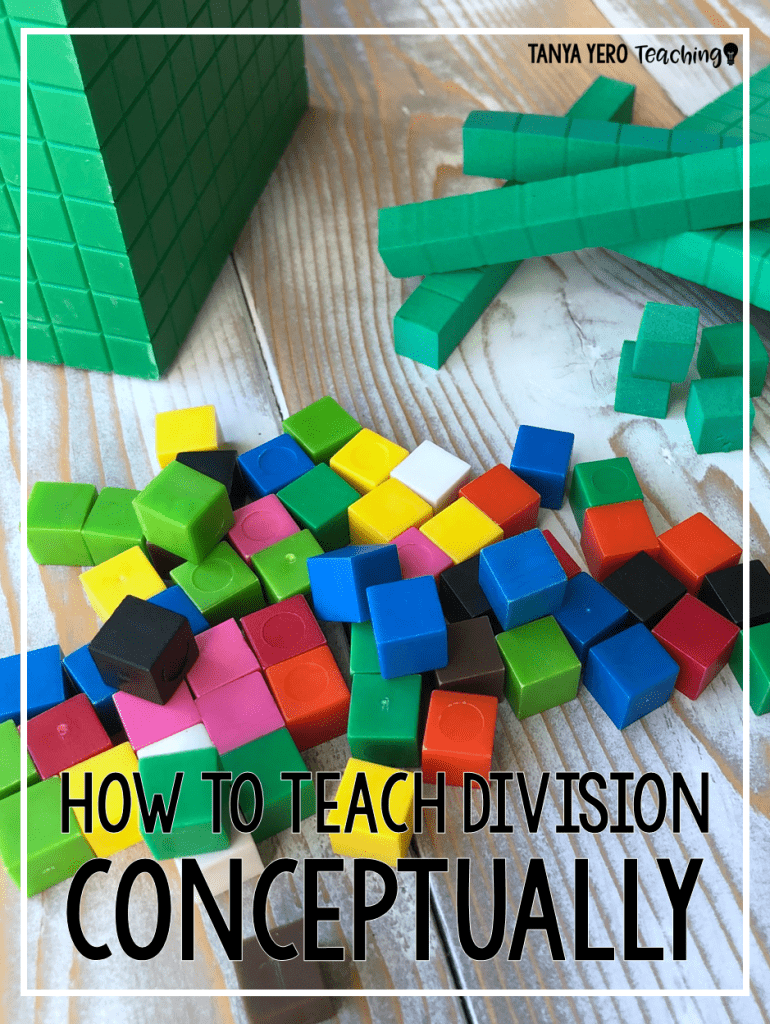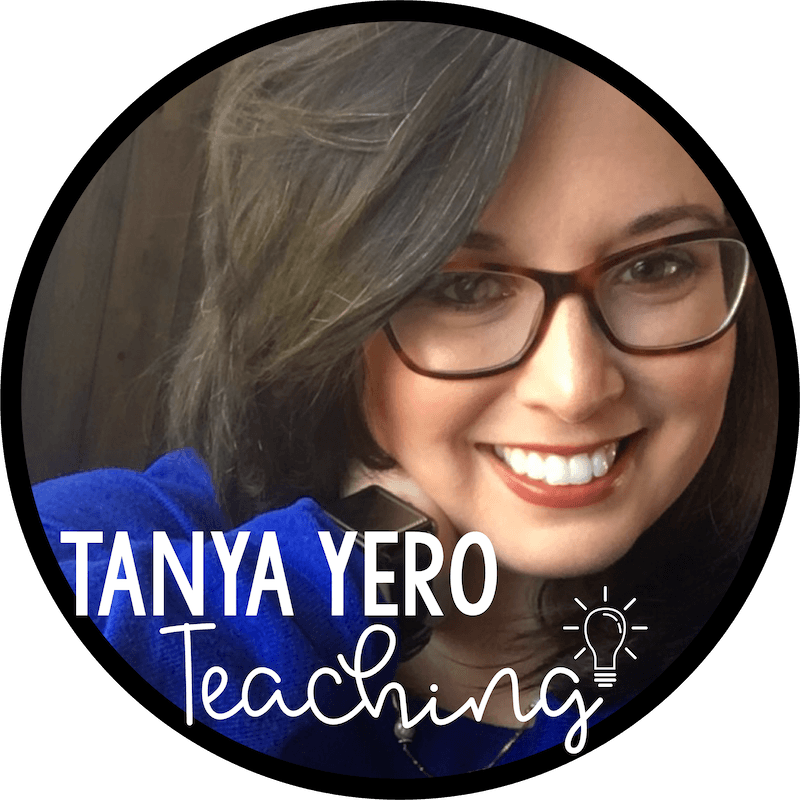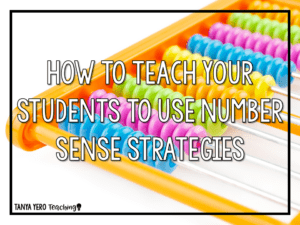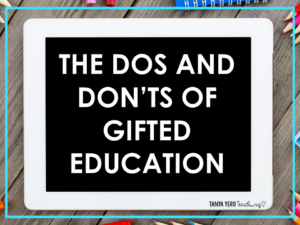
Teaching division is a complex skill with a lengthy formula for students to remember. But learning and more importantly understanding division doesn’t start with memorizing procedural steps. In fact, teaching the standard algorithm of division should be the last thing you teach your students.
How To Start Your Division Unit
To ensure I target conceptual understanding I ask my students a simple question to launch our division unit.
What is division?
“Division is seeing how many times a number can go into a number.”
“Dividing is when you make a number smaller.”
“Division is the saying does McDonald’s serve burgers.”
Such responses as the three above illustrate a lack of understanding of the concept of division.
I don’t give my students the answer. Instead I make them work for it.
I give my students a bag of centimeter cubes. My students sit in groups of 4-5, so I put a specific number of cubes in the bag to ensure that there will be a remainder amongst students.
I ask them to divide the cubes amongst the people at their table.
This sparks great discussion. I walk around and listen. Your students will look to you for the answer. They will stare at you with big eyes screaming “HELP US!” Don’t cave in. Let them explore.
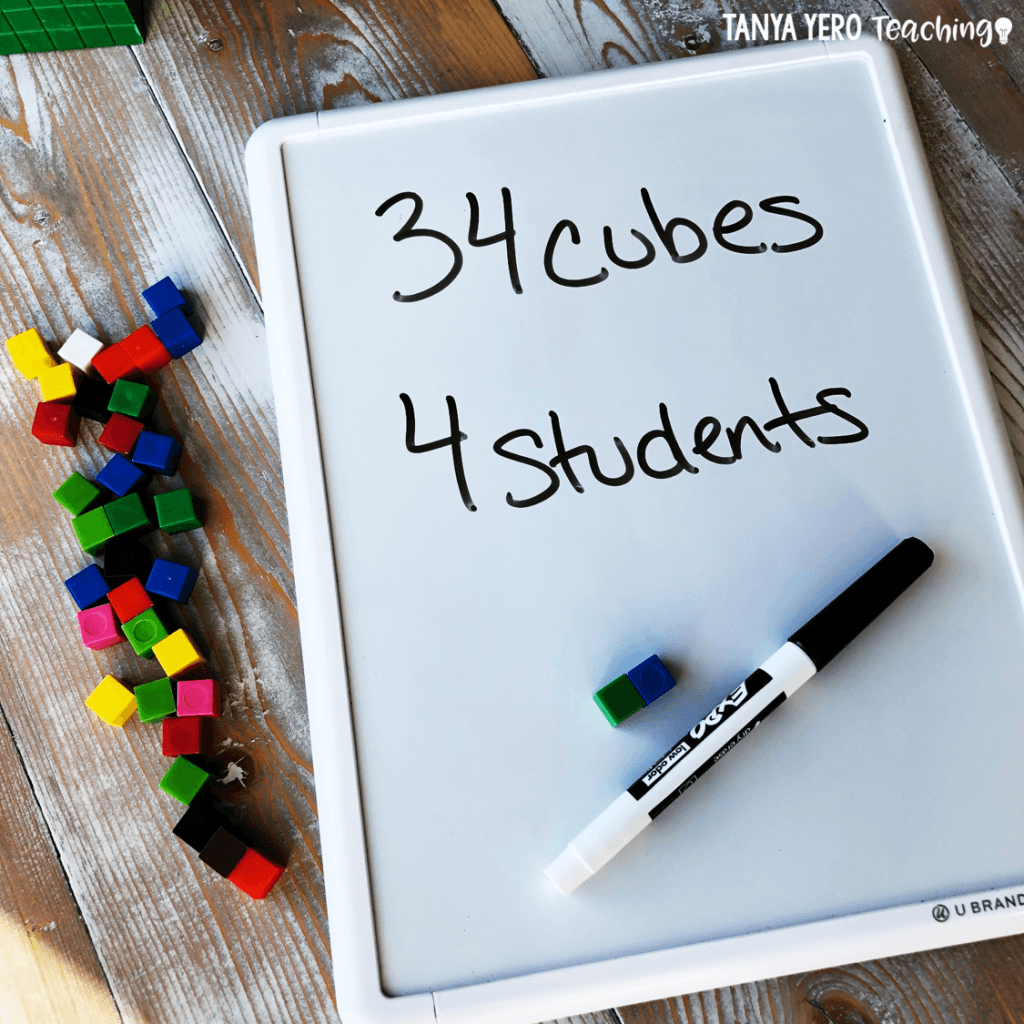
“How many should each person get?”
“Brian has more than me.”
“Who gets the extra cubes?”
“Everyone needs to have the same amount, that’s what divide means!”
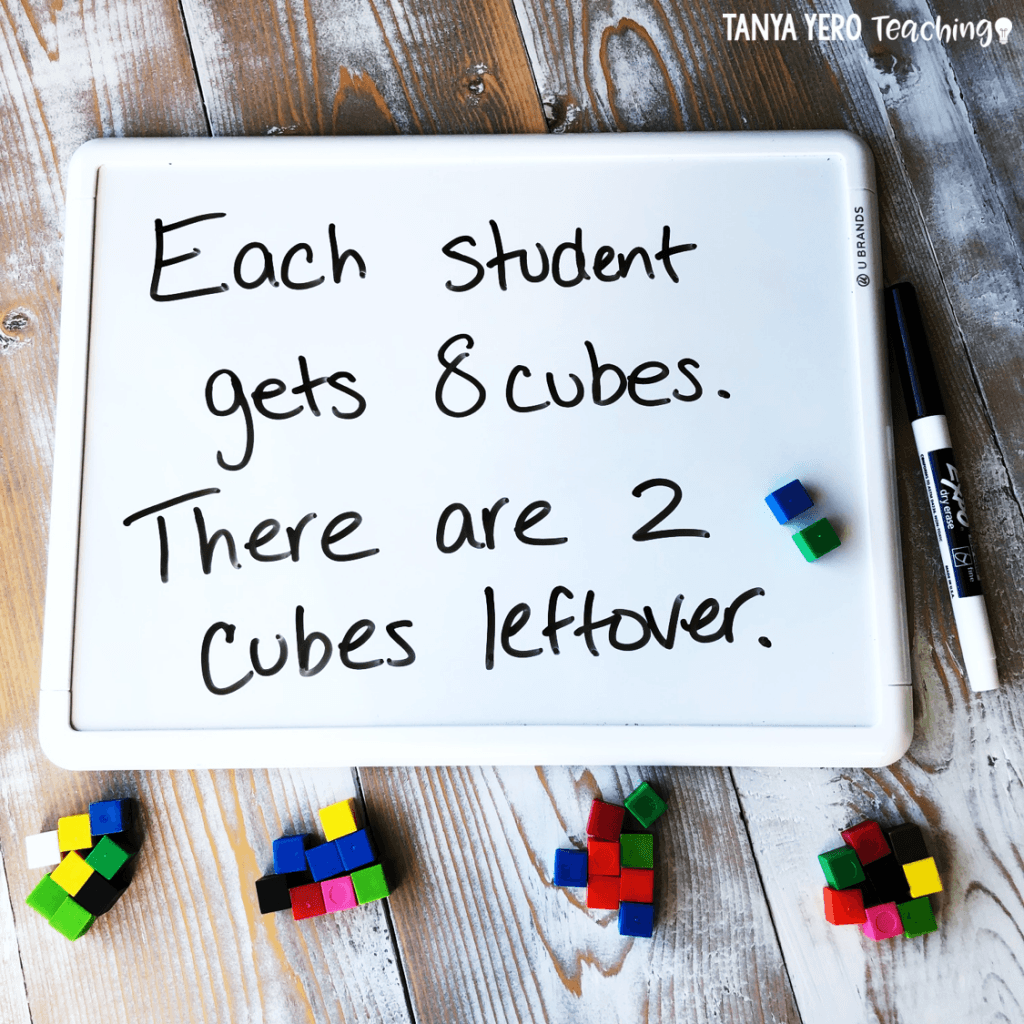
BINGO. You want each group to come to the conclusion that every person should have the same number of cubes sitting in front of them.
As each group is arriving at this conclusion, I go over to each table and ask them to create a division equation that matches their work. I also ask them to label each number in their equation.
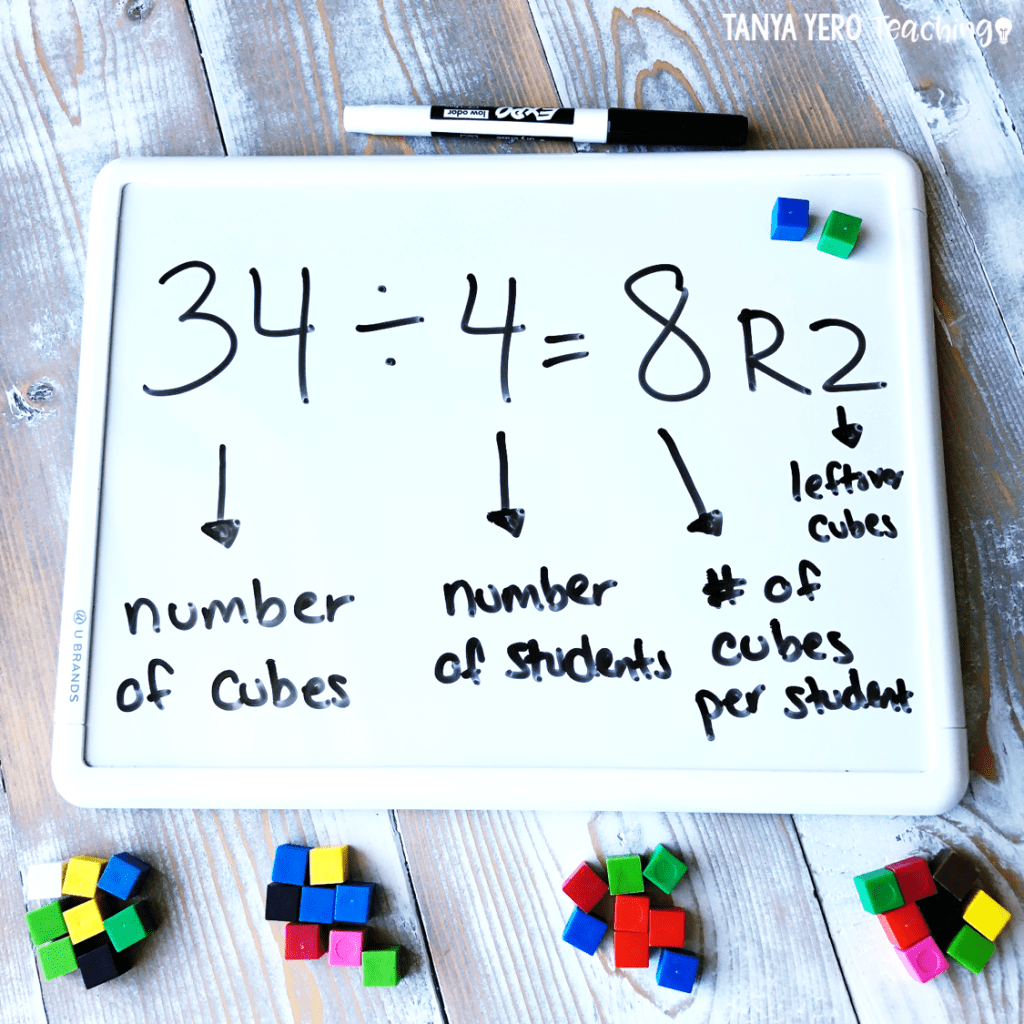
Now when I ask them what division is, I get the response I’m looking for. Division is putting objects into equal groups or putting the same amount of pieces into groups.
Take The Exploration To The Next Level
The next day I hand my groups another bag. This time the bag has base ten blocks. I give them the same prompt.
Divide the bag amongst the people at your table.
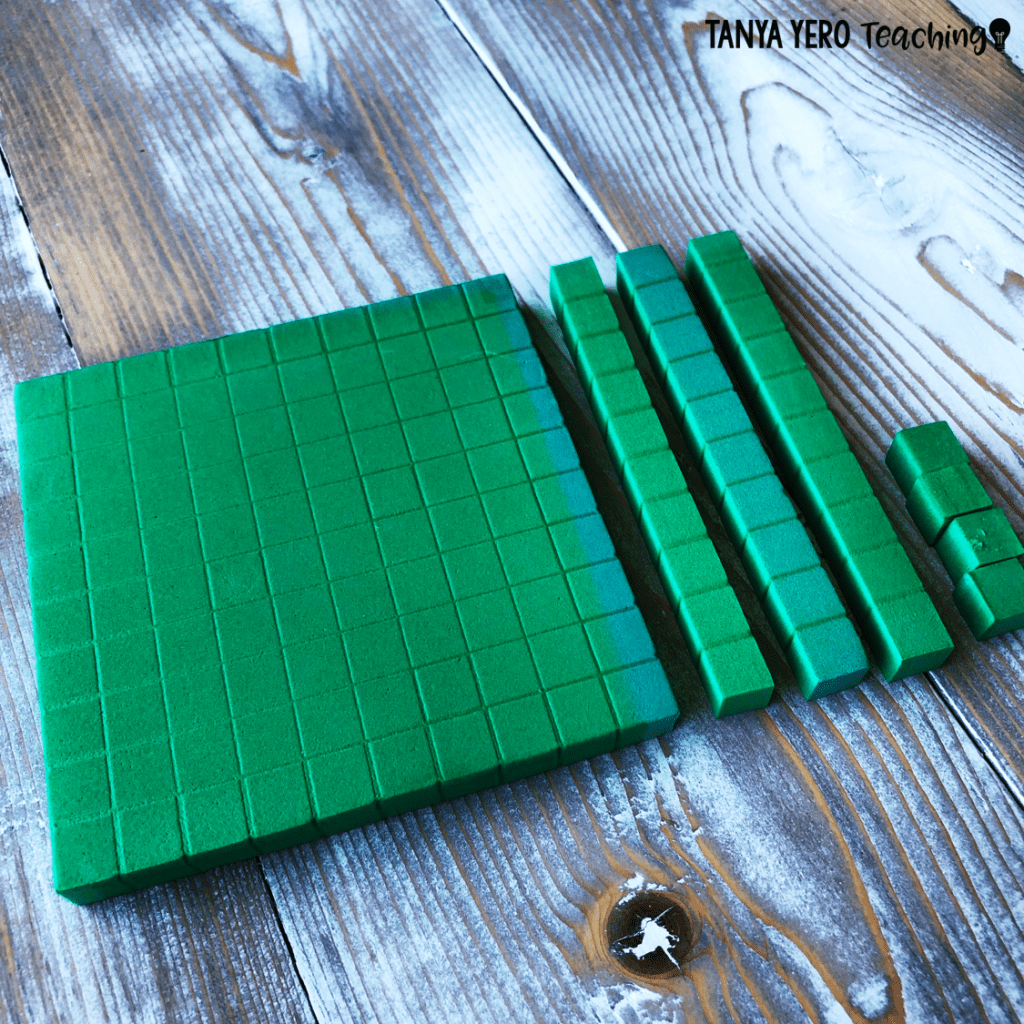
An even greater debate commences.
“How are we supposed to divide these?”
“I don’t get it!”
Finally, a group will approach me. “Can we trade a hundreds flat for 10 tens?” Sure! I complete the trade and the group forges on. Other groups start to catch up and pretty soon my room is transformed into a barter station.
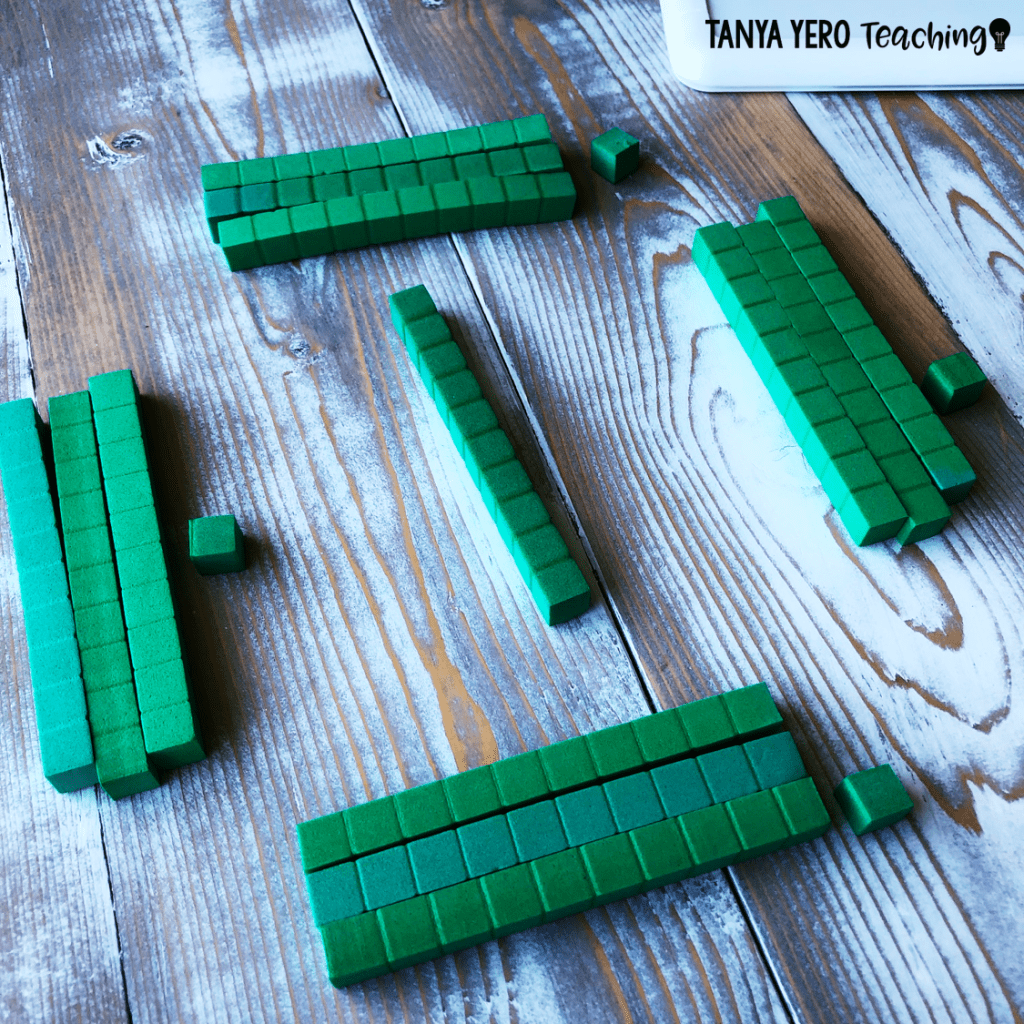
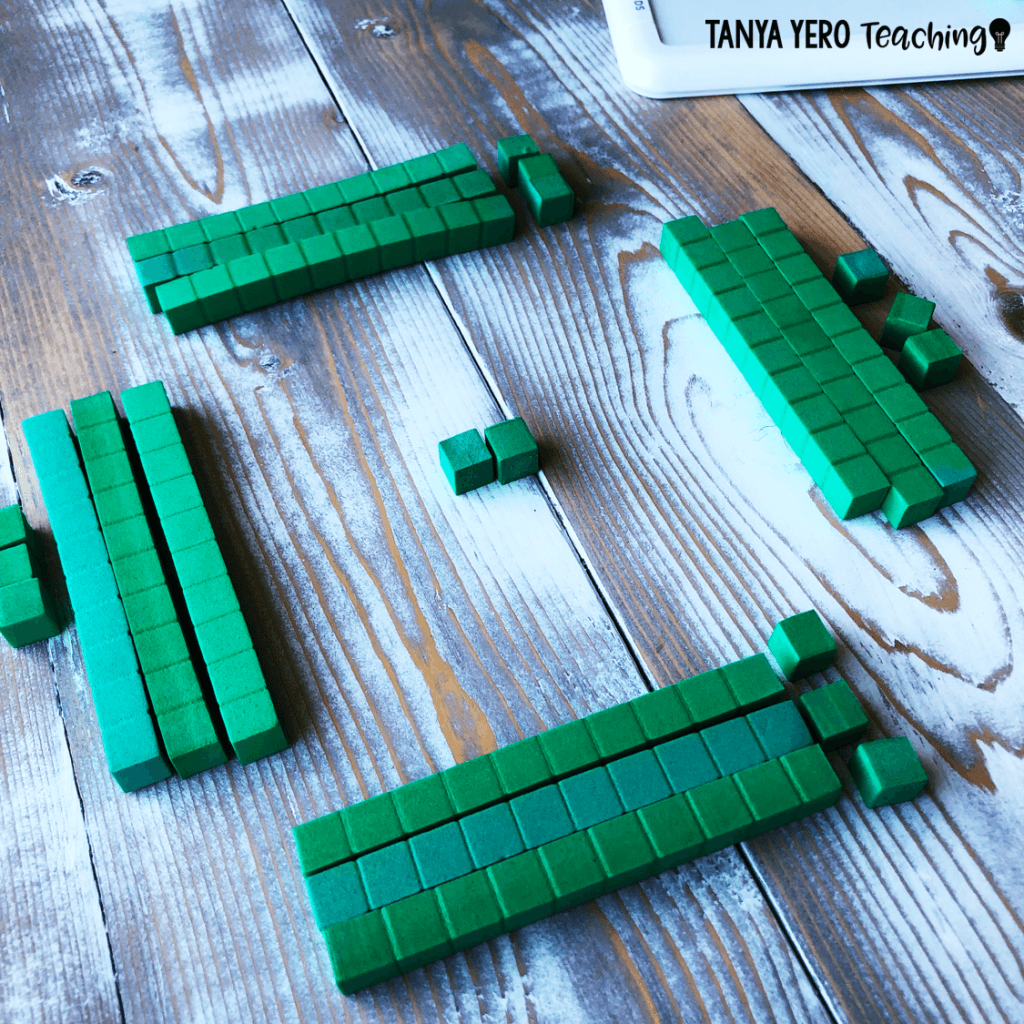
These are simple but highly effective lessons to implement in your classroom. Don’t start with having students memorize steps or a weird saying about burgers. After your students conceptualize division then you can teach them the formula.
Sign up below for your FREE Division Task Cards!
Success! Now check your email to confirm your subscription. YOU'RE SO CLOSE TO YOUR FREE TASK CARDS!
SIGN UP FOR YOUR FREE RESOURCE!
SUBSCRIBE NOW TO OUR NEWSLETTER TO RECEIVE YOUR FREE DIVISION TASK CARDS!
GET YOUR FREE TASK CARDS HERE!
